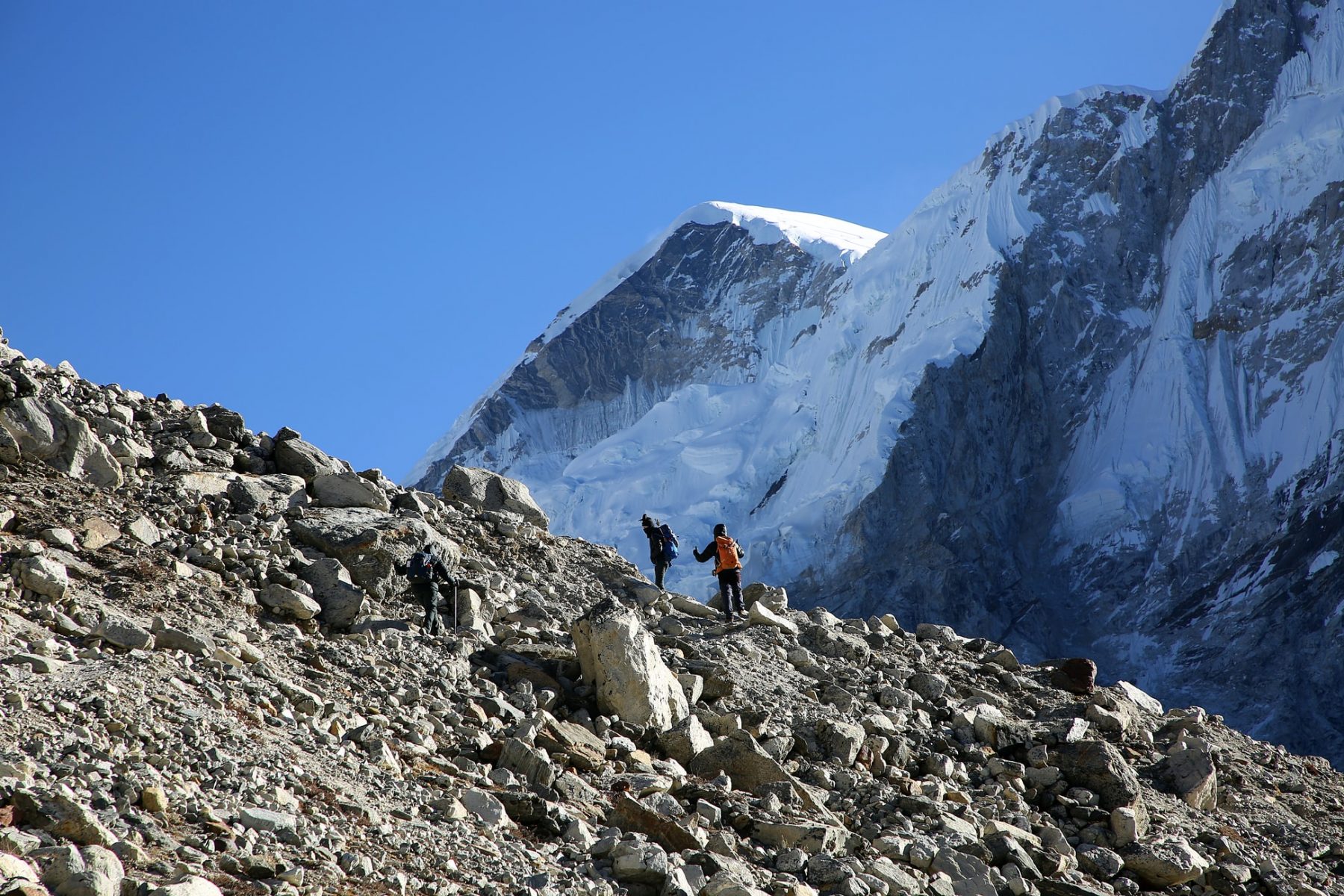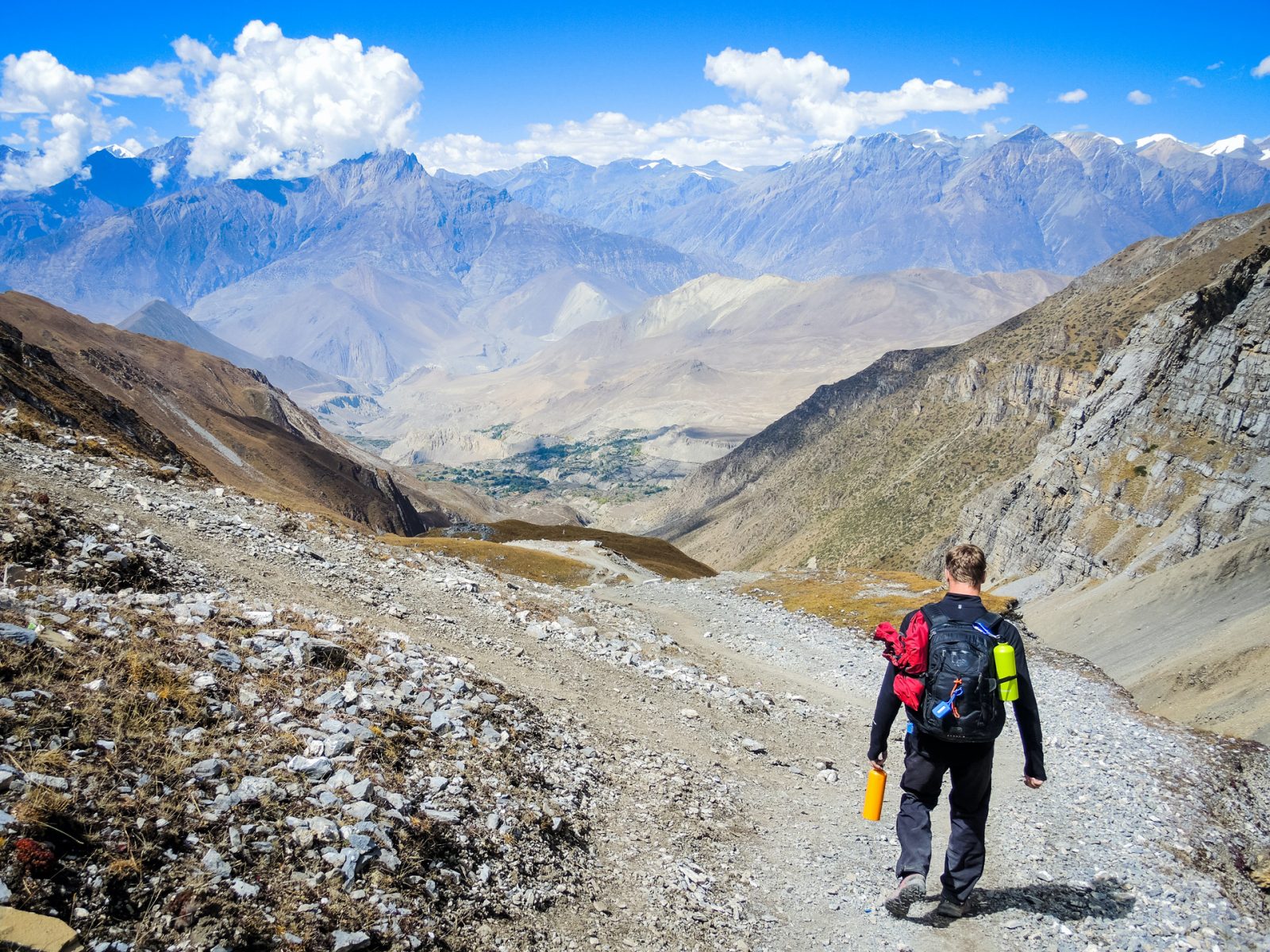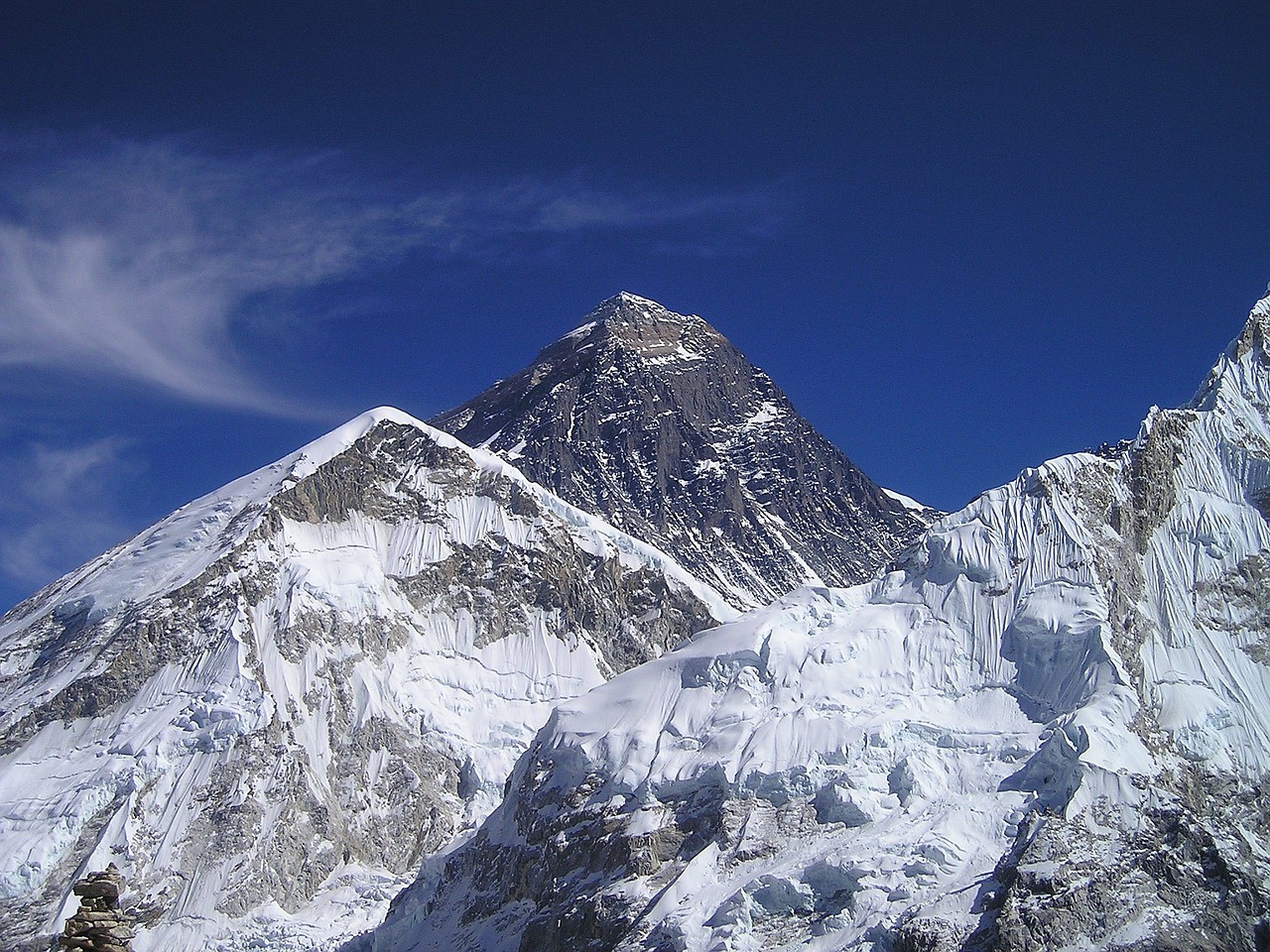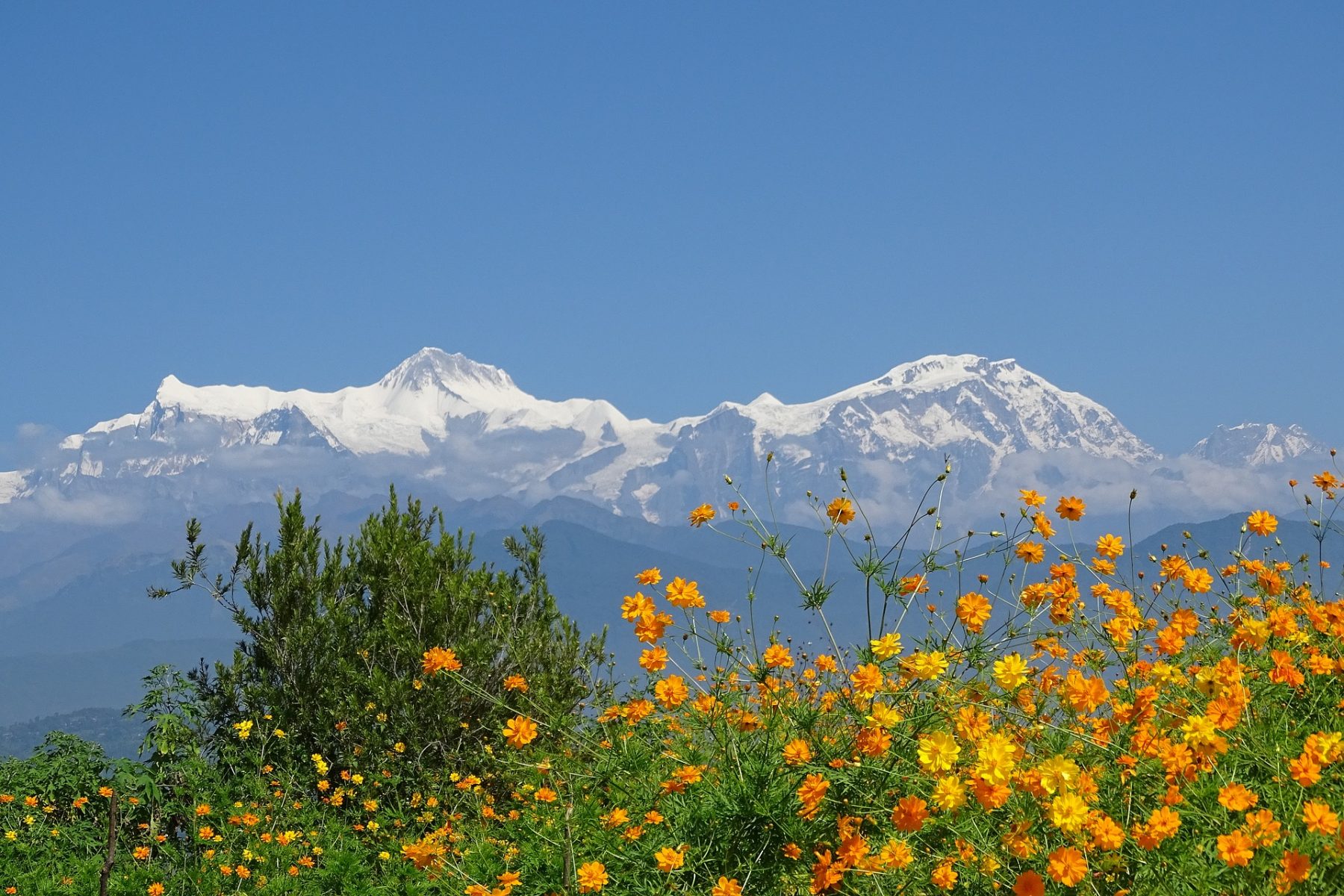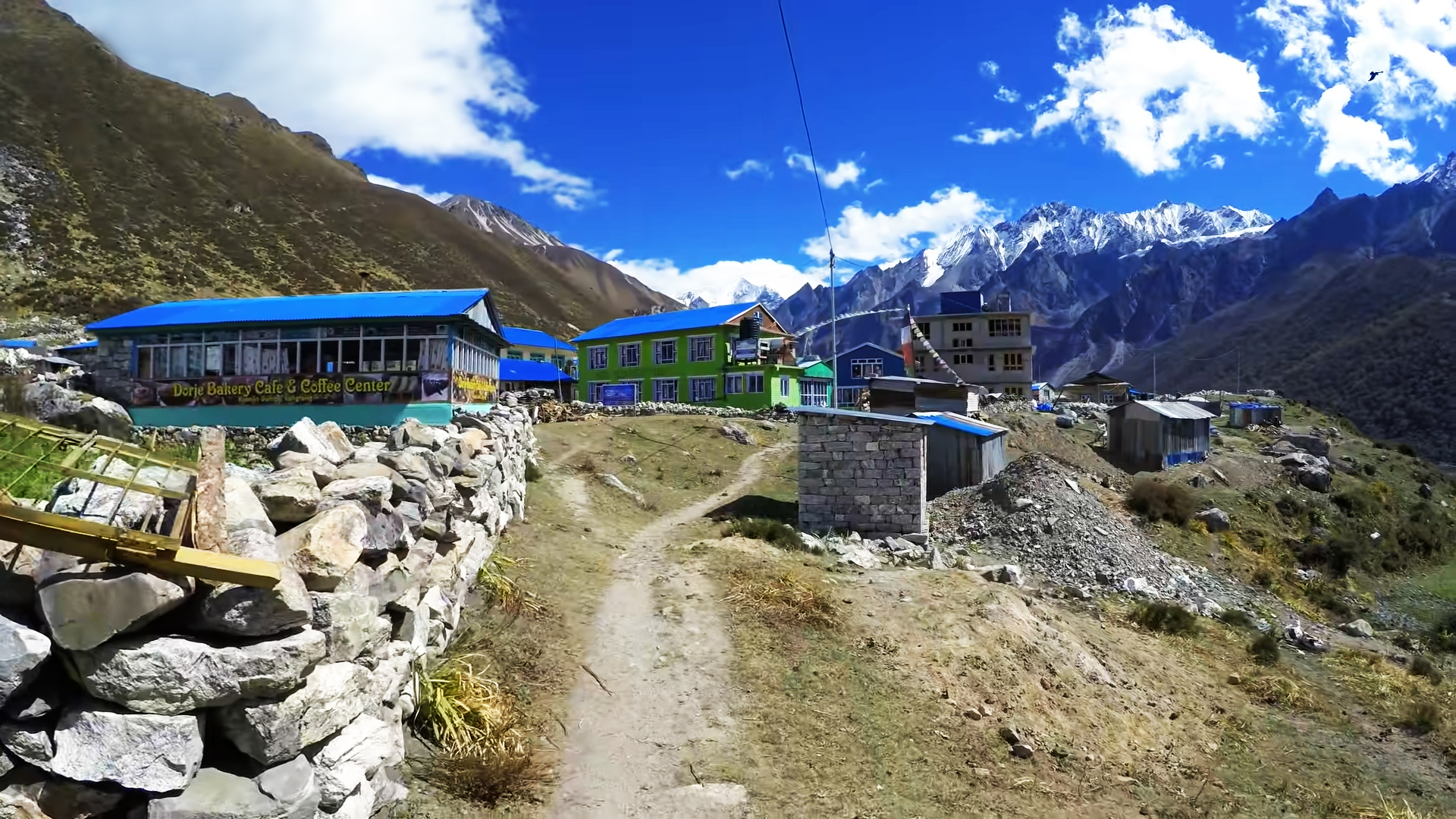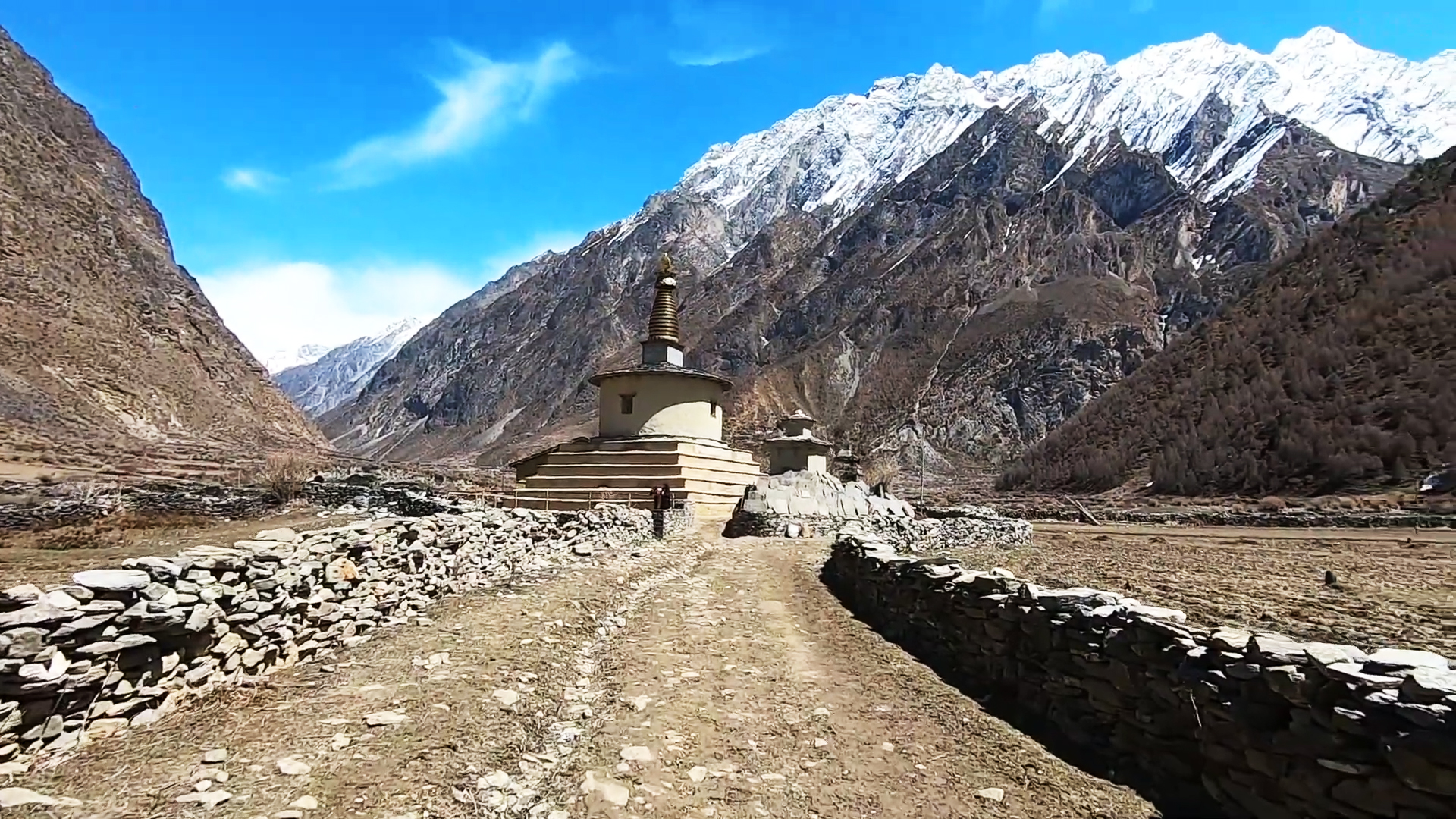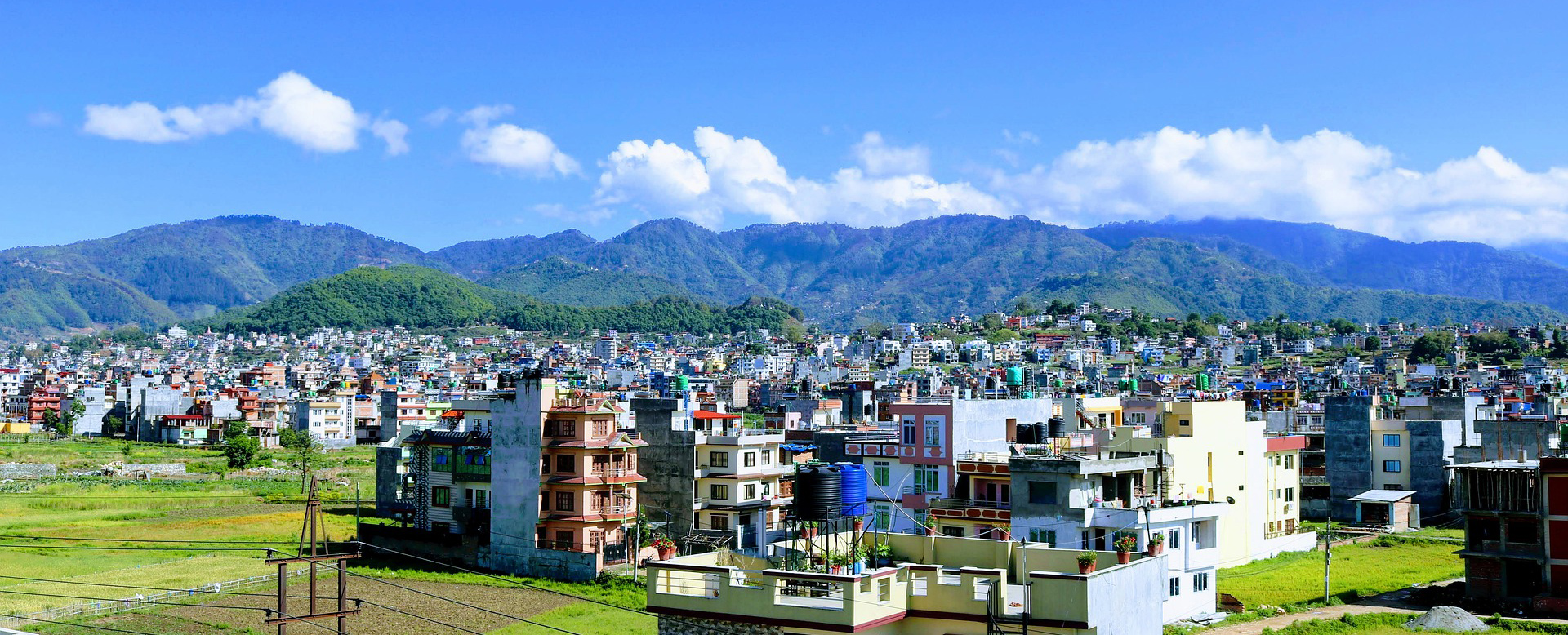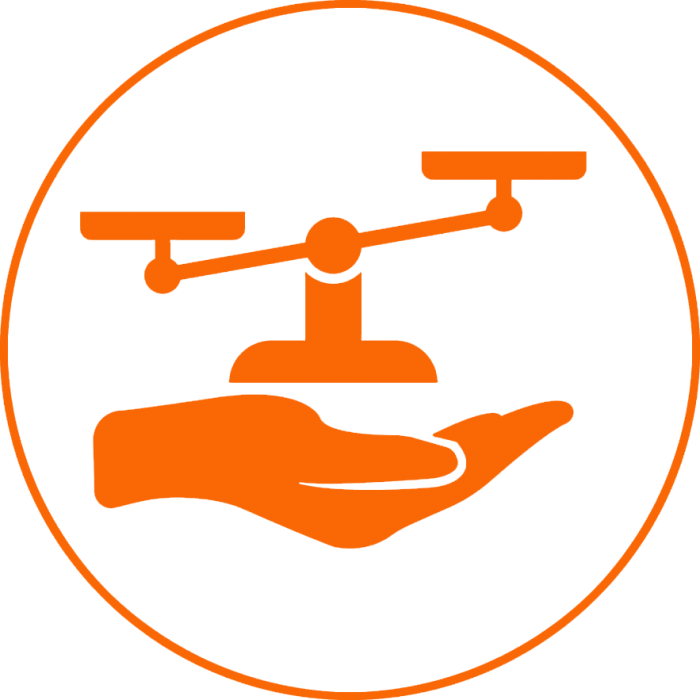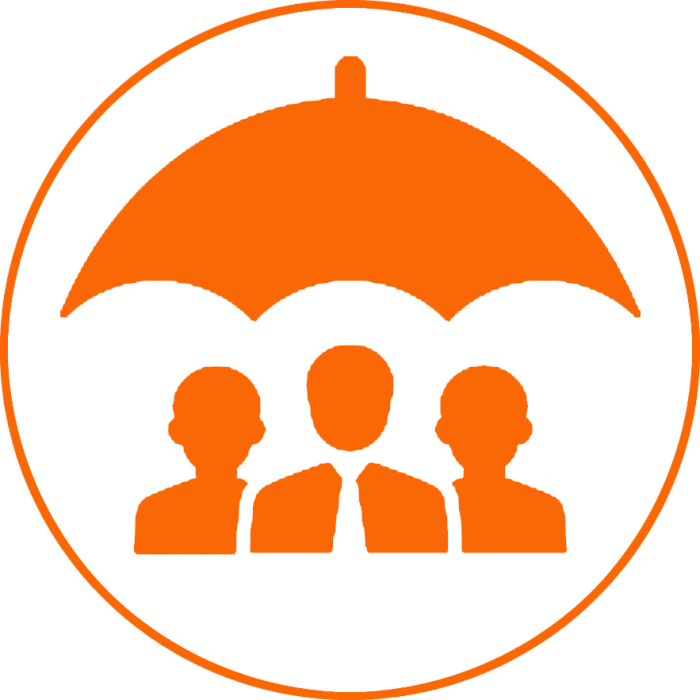Introduction of Trekking in Nepal
Trekking in Nepal has become a remarkable focal point for trekking lovers. Nepal, the country of the Himalayas, is an excellent destination for backpackers. Odyssey Treks is an established Best Trekking Company in Nepal. Odyssey Treks has been conducting various types of trekking in Nepal.
Nepal is one of the most beautiful countries in the world for trekking. Trekking in Nepal is the most popular activity among tourists. Every year, thousands of foreign tourists come to Nepal for trekking. Trekking in Nepal is a great way to experience the natural beauty and cultural heritage.
This country can offer a variety of trekking packages that only a few countries in the world can offer. Out of the 14 peaks above 8000 meters in the world, 8 are in Nepal. As Mount Everest is the highest peak in the world, the first choice of tourists is the Everest trekking. Everest, Annapurna, Langtang, Mustang, Manaslu, and other areas are famous for trekking in Nepal.
Nepal is the best trekking destination for trekkers looking for various trekking trails. This country is also known for its Himalayan adventure treks. Nepal offers easy, medium, and challenging trekking in every trekking area.
Let’s look at some aspects related to trekking in Nepal.
Why is trekking in Nepal famous in the world?
- Land of the Himalayas.
- Home to eight of the world’s 10 highest mountains above 8,000 meters.
- Everest (8,848 m) is the highest mountain in the world.
- Many viewpoints offer you a magnificent view of the Himalayas.
- Favourable weather for trekking.
- Unique Flora and Fauna.
- Easy and Well-Established Trekking Trails.
- Rich in culture and tradition.
- Choice of various trekking options (Long day or short day, easy or hard, high altitude or low altitude, etc.)
Trekking Regions (areas) in Nepal
There are many trekking regions in Nepal. And many trekking packages are available in those regions. Let’s take a detailed look at Nepal’s most popular trekking regions.
Everest Region

The best trekking terrain in Nepal! The Everest region is the most popular trekking region for all trekkers in Nepal. The world’s highest peak, Mount Everest (8,848 m), is in this region. Trekking in the Everest region is also the desire of many trekkers because of Mount Everest. The Everest trekking area is in the northeastern part of Nepal. The Sagarmatha National Park protects this area. Sagarmatha National Park covers an area of 1148 square kilometres. It is the highest national park in the world and is listed as a UNESCO World Heritage Site.
About 30,000 tourists come to trek in this area every year. The number of tourists shows how famous this region is for trekking in Nepal. The Everest region is famous for Sherpa culture, monasteries, landscapes, wildlife, and green forests. This is also popular for visiting the Khumbu Himalayan Glacier and the Khumbu Icefall. You can find incredible Himalayan views, beautiful villages, monasteries, and friendly Sherpa people.
This region offers you a view of magnificent mountains like Everest (8,848m), Amadablam (6,812m), Nuptse (7,861 m), Lhotse (8,51 m), Makalu (8,485 m), Cho Oyu (8,188 m), Pumori (7,161 m), Kantega (6,782 m), Baruntse (7,162 m), Thamserku (6,608 m), etc.
The Everest region offers a variety of scenic trekking trails. Everest Base Camp Trekking, Everest Panorama Trekking, Everest Short Trekking, Everest Thame Legendary Trekking, Everest Yeti Trail Trekking, Everest Three Pass Trekking, Everest Gokyo Lake Trekking, Everest Cho-La Pass Trekking, Everest Classic Trekking, etc., trekking packages are available in this region.
Visit Also: How to choose the best trekking company in Nepal
Annapurna Region

Annapurna is a beautiful trekking region in the foothills of the Himalayas. Trekking trails in this region take you from lush pastures in the lowlands to alpine forests in the highlands. Annapurna Base Camp, Poon Hill, and Ghandruk Village, Thorang La Pass, high-altitude Tilicho Lake, the world’s deepest Kaligandaki gorge, Muktinath Temple, Rupse Falls, Tatopani natural hot spring, and Pokhara City are the main attractions of the Annapurna region.
The Annapurna region in north-central Nepal is a famous trekking region. The Annapurna region is like a natural paradise. So, it is one of the most famous and prominent trekking destinations in Nepal. The Everest region is more popular than the Annapurna region for trekking in Nepal. But, based on actual visitors, the Annapurna region is the most visited trekking area.
The Annapurna region offers spectacular views of Dhaulagiri (8,167 m), Manaslu (8,156 m), Annapurna I (8,091 m), Tukche Chuchuro (6,920 m), Annapurna South (7,219 m), Machhapuchhre (6,996 m), and Nilgiris (6,940 m).
Annapurna Circuit Trek, Annapurna Sanctuary Trek, Jomsom Muktinath Trek, Ghorepani Poon Hill Trek, Dhampus Trek, Mardi Himal Trek, Tilicho Lake Trek, and Nar Phu Valley Trek are famous treks in the Annapurna region.
Langtang Region

Langtang is a famous trekking area in Nepal, after Everest and Annapurna. This is one of the most hidden trekking destinations in Nepal. 51 km from Kathmandu, this region is famous for its glaciers and snow-capped mountains. The Langtang area is located in the Langtang National Park. This national park was established in 1971 and is the first Himalayan national park in Nepal. This national park covers an area of 1,710 square kilometres.
Gosaikunda Lake and Kanjin Gompa Buddhist Monastery are famous destinations in this area. With moderate-to-challenging trekking trails, this region is suitable for adventure seekers. This region is close to Kathmandu, but most of the trekkers trek in the Annapurna and Everest regions. So, this area is not very crowded.
Trekking in this region offers you a magnificent view of the Shishpangma (8,013 m), Langtang Lirung (7,246 m), Gaurishankar (7,145 m), Lanashisha Ri (7,134 m), Dorje Lakpa (6,988 m), Ganesh Himal (6,704 m), and Naya Kanga (5,855 m) mountains. Langtang is a glacial valley with more than 70 glaciers.
There are various options for trekking, and you can choose the trek that suits you best. Langtang Circuit Trek, Langtang Tilman Pass Trek, Gosainkunda Frozen Lake Trek, Langtang Helambu Trek, Langtang Valley Trek, and Langtang Tamang Heritage are famous treks in the Langtang region.
Manaslu Region

The Manaslu region is another famous trekking destination in Nepal. This region offers a good option for trekking and adventure lovers. The world’s eighth-highest mountain, Manaslu (8,156 m), is the main attraction in this area. Another attraction is Larkya La Pass, the highest point of this route at an altitude of 5,160 meters. Trekking to this region is an adventurous journey. This area allows you to explore the cultural, historical, and natural aspects of Nepal.
It is a conservation area of 1,663 square kilometres. Nepal’s National Nature Conservation Fund (NTNC) manages and protects this area. The Manaslu region offers trekkers a variety of trekking options. Manaslu Circuit Trek, Manaslu Trek, and Tsum Trek are famous trekking routes in the region.
On this route, you can see the best views of 10 snow-capped mountains above 6,500 meters. The views of beautiful mountains like Manaslu, Ganesh Himalaya Range, Shringi Himal, Naike Peak, Larkya Peak, Cheo Himal, Ratna Chuli, Kangaroo Himal, etc., have made this area more famous. As this is a restricted area, you need a special permit from the Nepal Immigration Department to trek. Also, according to the rules, there should be at least two trekkers to get the permit.
Mustang Region

Trekking in the Mustang region is a challenging and adventurous journey. This region is like a paradise, with a vast number of mystical Himalayan landscapes. The mystical Himalayan landscape offers a great trekking experience and excitement for trekkers. Mustang is an amazing trip for trekkers to experience the best vacation of their lives in Nepal. Many tourists come every year to explore the amazing history and culture of Mustang.
You can learn about the lifestyle, culture, and traditions of the Mustang region. At an average altitude of 4,000 meters, this area is in a shadow zone. Isolated from the outside world, Mustang is a remote area of Nepal. Most people in the region still speak the traditional Tibetan language. With many caves, monasteries, forts, temples, and monks, Mustang is one of the most inspiring historical places in Nepal.
Trekking in this region is a unique and wonderful experience with beautiful mountain scenery, including the royal palace of Mustang and monasteries. Two mountains higher than 8,000 meters—Annapurna (8,091 m) and Dhaulagiri (8,167 m)—are in this region. The Upper Mustang Trek and Lower Mustang Trek are the most popular trekking routes in this region.
Other Trekking Trails Experience in Nepal

Apart from the above areas, you can also do various trekking activities in Kathmandu Valley. Kathmandu is a beautiful valley surrounded by green hills. Valley Treks lets you explore some of the best views around Kathmandu. Valley Treks offers short and easy treks around the Kathmandu Valley. Trekking trails are easy, short, and of normal altitude, making them suitable for all age groups. Chisapani Trek, Nagarkot Trek, Balthali Village Trek, Nagarkot-Dhulikhel Trek, and Namobuddha Trek are the popular trekking routes in Kathmandu Valley.
Off-the-beaten-path treks are also famous for trekking in Nepal. Off-the-beaten-path trek trails lead to the most remote areas of Nepal. Since these trekking trails lead to remote mountain areas, only a few tourists do the trek. Most off-the-beaten-path treks are long days with camping arrangements. But basic tea houses are available on some trekking routes. An off-the-beaten-path trek is an adventure trip. Trekkers can enjoy the adventure and avoid crowded areas like Everest and Annapurna.
Walking on these trails is difficult due to the high altitude and the narrow and steep paths. Most of these trails are challenging. So, any trekker needs prior trekking experience and good physical fitness. Most trekking destinations in remote areas are restricted. Trekking in these restricted areas requires a special permit from the Nepalese government. Lower Dolpo Trek, Upper Dolpo Trek, Rara Lake Trek, Rolwaling Tasi Lapcha Pass, Jugal Himal Trek, Ganesh Himal Trek, Bhairav Kunda Trek, Api Himal Trek, Makalu Base Camp Trek, Nar Phu Valley Trek, Kanchenjunga Trek, Dhaulagiri Trek, etc, are famous off-the-beaten-path trekking trails in Nepal.
Best Treks in Nepal
If you are thinking of trekking in Nepal, then it is natural to be curious about the best treks in Nepal. There are more than 100 trekking trails in Nepal. Different websites may have different suggestions about the best treks in Nepal. But here we have prepared some of the best treks in Nepal based on popularity and the most trekked.
Everest Base Camp Trekking in Nepal

Everest Base Camp Trekking is a famous trekking destination in the world. Mount Everest (8,848 m), the top of the world, attracts trekkers to its base camp. Everest Base Camp Trekking is one of the top three trekking destinations in the world. This trek is also popular for visiting Khumbu Himalayan Glaciers, Khumbu Icefall, beautiful landscapes, ancient Tibetan monasteries, Tibetan Sherpa culture, wild animals, and green forests.
On this trek, you will get spectacular views of Mount Everest (8,848 m), Mount Lhotse (8,516 m), Mount Makalu (8,481 m), and Cho-Yo (8,201 m) above 8,000m. Everest Base Camp Trekking is for trekkers who want to enjoy the lap of the world’s highest mountain. Kalapatthar is a famous viewpoint of this trekking. From Kalapatthar, you can witness amazing sunrise views. Another attraction is the famous Tengboche Monastery, which is at an altitude of 3,860 meters. This monastery is also the most famous and largest in the Khumbu area.
Trip Highlights
Duration: 14 Days
Region: Everest
Max Elevation: 5,545 m
Accommodation: Tea House
Grade: Moderate
Restricted Permits: No
Best Seasons: Mar-May, Sep-Nov
Annapurna Base Camp Trekking in Nepal

Located in the Annapurna region of Nepal, this trek is one of the most popular in Nepal. At an altitude of 4,130 meters above sea level, the Annapurna base camp is a trekking destination of choice for many foreign and domestic trekkers. The highlight of this trek is Poon Hill, which is the best place for a sunrise view. From Poon Hill, you can witness the best view of the sunrise.
The scenic view of bamboo, alpine vegetation, and dense rhododendron forest en route will captivate you. This trek offers a panoramic view of majestic peaks like Annapurna (8,091 m), Gangapurna (7,455 m), Machhapuchhre (6,993 m), Lamjung (6,983 m), Nilgiri South (6,839 m), Hiuchuli (6,441 m), etc. As the maximum altitude is only 4,130 m, this trekking is easy so that any fit person can complete it.
Trip Highlights
Duration: 14 Days
Region: Annapurna
Max Elevation: 4,130m
Accommodation: Tea House
Grade: Moderate
Restricted Permits: No
Best Seasons: Mar-May, Sep-Nov
Everest Three-Pass Trekking in Nepal

The Everest Three-Pass Trek is the most famous in the Everest region. This is an adventure trip that combines the Everest Base Camp and the famous three high passes. The Everest Three-Pass Trek is a perfect option for thrill seekers and adventure lovers. This trek takes you to three high passes: Renzo La Pass (5,360 m), Cho-La Pass (5,420 m), and Kongma-La Pass (5,535 m). Hence, this trek is also called the Everest High Pass Trek.
The trekking trail also leads to the highest points of Gokyo Ri (5,357 m), Kalapatthar (5,545 m), and Everest Base Camp (5,364 m). Crossing three high passes in a single trip is an adventurous experience. During the trek, you will get an opportunity to experience up close the culture, traditions, and lifestyle of the Sherpa people. This is a challenging trek, so you need good physical fitness with previous trekking experience.
Trip Highlights
Duration: 18 Days
Region: Everest
Maximum Elevation: 5,545m
Accommodation: Tea House
Grade: Moderate to Strenuous
Restricted Permits: No
Best Seasons: Mar-May, Sep-Nov
Ghorepani Poon Hill Trekking in Nepal

The popular Ghorepani Poon Hill Trek is one of the classic short and easy treks in Nepal. This trek in the Annapurna region is a short and easy trek preferred by novice trekkers. Offering excellent Himalayan scenery with less time and effort, this trek attracts many trekkers. Trekkers can enjoy the remarkable natural beauty during this beautiful trek.
You can visit Gurung and Magar settlements, which have many temples and monasteries. This trek starts in the beautiful tourist city of Pokhara and ends in Pokhara. The main attraction of this trek is Poon Hill, which is the most famous place in Nepal for a sunrise view. It is a good option for trekkers who want to spend a short holiday in Nepal and walk through the countryside with beautiful mountain scenery.
This trek is suitable for trekkers of all ages. Ghorepani Poon Hill Trekking offers panoramic views of Nepal’s famous peaks: Dhaulagiri, Nilgiri, Hiuchuli, Machhapuchhre, Annapurna, and Annapurna South. No previous trekking experience is necessary, as the trek is short, easy, and at a low altitude.
Trip Highlights
Duration: 8 Days
Region: Annapurna
Max Elevation: 3,210m
Accommodation: Tea House
Grade: Easy
Restricted Permits: No
Best Seasons: Mar-May, Sep-Nov
Manaslu Trekking in Nepal

Manaslu Trekking is one of the most beautiful treks in Nepal. This trek circumnavigates the eighth-highest mountain in the world (Mount Manaslu). The Manaslu Trek was opened for trekking only in 1992. It quickly became popular among trekkers due to its scenic views, uniqueness, and untouched beauty. This trek takes you to the Manaslu Conservation Area and offers magnificent views of the mountains. Manaslu Conservation Area is an animal and bird sanctuary. It protects endangered wildlife such as the grey musk deer, the Himalayan Thar, snow leopard, blue sheep, and red panda.
This is a moderate-to-strenuous trek that takes you to the highest elevation of Larkya La Pass at 5,160 meters. This trekking trail covers the Manaslu Conservation Area and the Annapurna Conservation Area. The trip takes you to the beautiful Himalayan region near the Chinese border. Allows you to experience the culture and lifestyle of both Hindus and Buddhists. As Manaslu is a restricted area, a special permit is mandatory for trekking. It requires at least two people to get a permit for this trek.
Trip Highlights
Duration: 15 Days
Region: Annapurna, Manaslu
Max Elevation: 5,160m
Accommodation: Tea House
Grade: Moderate to Strenuous
Restricted Permits: Yes
Best Seasons: Mar-May, Sep-Nov
Upper Mustang Trekking in Nepal

Upper Mustang trekking is one of the most preferred treks in Nepal by trekking lovers. This trekking trip to the Mustang region is remarkable, adventurous, and scenic. The Upper Mustang is a valley in the northern part of Nepal. Located in the rain shadow of the Himalayas, the geography of this region is different from other regions of Nepal. Rainfall is less in this area than it is in the rain shadow. Due to less rainfall, the land in this area is dry and barren. You can trek to Upper Mustang even in the rainy season, as there is less rainfall.
The Upper Mustang has become one of the major trekking destinations in Nepal due to its distinct geography, history, and culture. An Upper Mustang trek is like a treasure hunt in mysterious places. So, if you want to explore the centuries-old lifestyle in a mysterious place, the Upper Mustang trekking is the best option. During the trek, you can enjoy a panoramic view of 3 mountains above 8,000 meters: Dhaulagiri (8,167 m), Annapurna (8,091 m), and Manaslu (8,163 m).
Trip Highlights
Duration: 16 Days
Region: Mustang
Max Elevation: 4,960m
Accommodation: Tea House
Grade: Moderate
Restricted Permits: Yes
Best Seasons: Mar-May, Sep-Nov
Langtang Valley Trekking in Nepal

Langtang Valley Trekking is one of the most popular and beautiful treks in the Langtang region of Nepal. This region is about 51 kilometres north of Kathmandu. This region is a glacially rich valley with more than 70 glaciers. The Tamang people inhabit the Langtang Valley. The Tamang people are the ancient and prominent inhabitants of the area. Being influenced by the Tibetan way of life, the religious customs, language, and dress of the people of this area are similar to those of Tibet.
Rhododendron forests, majestic waterfalls, snow-capped mountains, glacial lakes, lush vegetation, and beautiful landscapes are the highlights of this trek. This trek is a great option for nature lovers and adventure seekers. In Langtang Valley, you can explore Kyngjing Gompa. Kyngjing Gompa is the oldest and most famous monastery in the area.
This trek offers you a panoramic view of majestic mountains like Langtang Lirung (7,234m), Langtang II (6,586m), Naya Khang (5,844 m), and Yala Peak (5,520m). You don’t need previous trekking experience. Fit people of any age group can complete this trek.
Trip Highlights
Duration: 9 Days
Region: Langtang
Max Elevation: 3,900m
Accommodation: Tea House
Grade: Moderate
Restricted Permits: No
Best Seasons: Mar-May, Sep-Nov
Types of Trekking in Nepal
The types of trekking in Nepal are tea house trekking and camping trekking, which are based on food and accommodation. Teahouse treks in Nepal are popular because they are easy to operate and the cost is also low. Teahouses are available on many trekking trails in Nepal. But on those trails that do not have teahouses, there is a compulsion to go camping. Camping trekking is a bit more difficult and expensive than teahouse trekking.
Tea House Trekking
Teahouses are available along most of the popular trekking routes. You can also find teahouses along the world-famous Everest Base Camp trekking route. Teahouses along the trekking trails provide both food and accommodation to the trekkers. This means that trekkers can get food and accommodation at the same place. Most of the tea houses have basic facilities. The quality of teahouses depends on the location. If the teahouses are at a higher altitude, we can get fewer facilities. But if you do famous trekking like the Everest Base Camp and the Annapurna Base Camp, then you can find luxurious hotels on these trails.
Camping Trekking
Camping trekking is less popular than tea house trekking in Nepal. You can go camping on all treks, but camping is not necessary on treks where teahouses are available. Some trekking destinations in Nepal are very remote. There are no accommodations or food facilities on these trekking trails. In such remote places where teahouses are not available, you have to go camping. Camping involves carrying food, fuel, trekking equipment, and camping equipment. The guide, assistant guide, porter, cook, kitchen helper, and camp helper are operated as crew members.
Trekking Peaks
If you want to take trekking to the next level, then you can choose the trekking peaks of Nepal. Trekking peaks offer you the experience of trekking as well as climbing. Nepal Mountaineering Association (NMA) has listed 27 peaks as trekking peaks. All trekking peaks are below 7000m (22965 feet). It can be climbed by anyone with high-mountain trekking experience. Trekking peaks need a permit from the NMA to climb. Climbing these trekking peaks does not require hardcore training, but requires technical skills. It is important to be physically and mentally prepared for the climb. Mera Peak, Island Peak, Lobuche Peak, Pisang Peak, and Yala Peak are famous trekking peaks in Nepal.
Trekking Difficulty Level
There are many treks available in Nepal, ranging from easy to difficult. You can choose trekking according to your previous trekking experience and physical fitness. There are three levels of trekking: easy, medium, and strenuous. Most of the short-day treks are easy, while the long-day treks are moderate and strenuous. Treks up to 4000 meters are easy, and treks up to 5000 meters are moderate. If the trekking takes you above 5,000 meters, then it is a strenuous level of trekking. Trekking in the most remote Himalayan areas is difficult. A hard level of trekking involves a lot of ups and downs, so you should be able to walk for longer periods of time.
Pikey Peak Trekking, Australian Base Camp Trekking, Nagarkot Trekking, Annapurna Panorama Trekking, Langtang Trekking, etc., are popular short and easy treks in Nepal. Everest Three Pass Trekking, Dhaulagiri Trekking, Upper Dolpo Trekking, Rolwaling Tashi Lapcha Pass Trekking, Kanchenjunga Trekking, etc., are popular strenuous treks.
Best time to trek in Nepal
If you are planning to trek in Nepal, then it is important to know the best time for trekking. Nepal has different types of climates in different places and at different altitudes. Most high-altitude and long treks are done during the best season. Winter and summer are not good times for trekking in Nepal. The winter seasons include December, January, and February. This season brings cold, dry weather and snow in the mountains. During this time, trekking is difficult and risky due to the extreme cold and high snowfall.
During the summer season (June, July, and August), the weather is hot and humid. Hot and humid conditions cause heavy rainfall. Rains can cause landslides and close the trails. So trekking during this time is not advisable. Spring and autumn are good times for trekking in Nepal. The spring season (March, April, and May) begins after winter. It is a bit cold in the beginning and gradually warms up. During this time, the weather is stable, which creates favourable conditions for trekking.
Autumn (September, October, and November) is the best trekking season in Nepal. Now that summer is over and winter has not started, it is suitable for all aspects of trekking in Nepal. In autumn, the weather is clear, the forest looks natural, and the scenery is breathtaking. Autumn is the best and least risky time for trekking in Nepal. There is no restriction on trekking in Nepal at any time, but it is wise to choose the best time. Among the four seasons, spring and autumn are the best trekking times in Nepal.
Trekking Companies in Nepal
If you are planning to trek in Nepal, you may be confused about which trekking company to choose. There are many trekking companies available in Nepal. Among them, you need to identify the genuine company. Check the legal documents to see whether the company is registered with the relevant body of the Nepali government. Read company reviews and testimonials. Check the profiles of company directors and teams. Check for a landline phone number and business address. Also, check how long the company has been operating. Email several trekking companies for inquiries. Two-way communication informs you about the services they provide.
Food and accommodation during trekking in Nepal
Teahouses are available on many famous trekking trails in Nepal. These are run by locals in various villages along the trekking trail. Teahouses provide food and accommodation to trekkers. A teahouse is like a small lodge with a simple room with a bed, pillow, mattress, and blanket. These teahouses serve local Nepali food as well as continental food. Rice, noodles, chocolates, eggs, biscuits, soft drinks, cereals, bread, etc., can be found in most teahouses.
Luxury hotels and lodges are also available on some trekking trails. So, if your budget is high, you can use those hotels and lodges. Teahouses are available in Nepal’s famous treks like the Everest Base Camp Trekking, Annapurna Base Camp Trekking, Ghorepani Poon Hill Trekking, Langtang Valley Trekking, Upper Mustang Trekking, Manaslu Trekking, etc.
Teahouses are not available on trekking trails in some remote areas of Nepal. You have to do a camping trek in those areas. You have to make arrangements for food and accommodation for the camping trek. Camping involves carrying food, fuel, trekking equipment, camping equipment, etc.
Safety and Insurance During Trekking in Nepal
Safety and insurance are important when trekking in Nepal. Every year, thousands of tourists come to Nepal to trek. And all return home after completing the trek. Thus, there is no doubt that Nepal is safe for trekking. Apart from the restricted areas of Nepal, you can also do solo trekking without a guide, porter, or agency. But it is always better to do trekking in Nepal through a local trekking company. You will be safe if you trek with a local company, as the Government of Nepal licenses the guides and the porters, who are well-trained. Guides will be responsible for your safety as well as your luggage during the trek. The guide also takes care of your health.
As per Nepalese law, insurance is not mandatory for travelling in Nepal. But it is mandatory for you, especially for high-altitude trekking. Your personal travel insurance is not included in the price of the trip. So, it is better to get travel and medical insurance when coming to Nepal. Such a travel medical policy should also cover helicopters and other transportation costs. Choose an insurance company whose policies cover all aspects of travel insurance. Guides and porters are insured by the trekking company you choose.
High altitude sickness and acclimatization
Altitude sickness is the main problem while trekking in high mountains. So you should be very careful about it. Altitude sickness is common while trekking in high mountains. But if ignored, it can lead to serious problems. But if you take some precautions, you can avoid this problem. Its symptoms may vary from person to person. Usually, headaches, nausea, dizziness, fatigue, etc., are its symptoms.
There is usually a risk of altitude sickness at altitudes above 2,500 meters. At altitudes above 3,500 meters, oxygen is less. So, the body needs more time to adapt to the external atmosphere. Hence, it is necessary to include acclimatization days in the trekking schedule. A schedule with acclimatization days is an important way to avoid altitude sickness.
Walking uphill requires acclimating yourself to certain places. If you are well-acclimated to low altitude, trekking becomes easier. Ascend slowly when symptoms of altitude sickness appear. Drink plenty of fluids, and avoid smoking and alcohol. Consuming garlic also helps prevent altitude sickness.
Guides, porters, and luggage During Trekking
You can trek in general areas of Nepal without a trekking company, guide, or porter. But for trekking in restricted areas, there is a rule that you have to trek with a trekking company. Also, you need to hire licensed guides and trained porters. The trekking company provides guides and porters for those restricted areas. But it is a wise decision to trek with a company, guides, and porters while trekking in any area. Trekking through a company is a safe option. It is the company’s responsibility to avoid any accidents during trekking.
Guides are professionals who know the trekking trail better than others. Guides are local to the trekking area. So they can provide good information about the local culture, customs, and festivals. With a guide, you can explore the places better. Guides manage transportation, accommodation, food, trekking schedules, routes, and safety on the trail.
You may not have a lot of luggage for short and easy treks, but for long or difficult treks, you usually have a lot of luggage. You need porters to carry heavy luggage. According to the rules, a porter can carry a maximum weight of 20 kg while trekking. If the luggage is more than 20 kg, you can hire extra porters.
Independent or Guided Trekking
First of all, it is important to know the rules for trekking in different areas of Nepal. Trekking areas are classified into normal trekking areas and restricted areas. You cannot do independent trekking in restricted areas. According to the rules, you can only trek in any restricted area with a guide from a company. But you can trek without a guide in the normal area. If you are an experienced backpacker, it is possible to trek without a guide in those normal areas. You don’t need to hire a guide for many popular trekking routes in the Annapurna and Everest regions.
If you plan to do an independent trek, make sure you have a good map, proper permits, and a good guidebook before you start trekking. Also, you need a good amount of time to plan and prepare for the trek. Independent trekking is a good advantage for experienced trekkers. Independent trekking is less expensive as it saves money on hiring a guide. You can trek on your own schedule. There will be more direct interaction with the locals. Food and lodging will be your choice.
But if you are unsure about your preparation or worried about high-altitude safety, trekking with a guide is a good option. Trekking guides have good knowledge about trekking trails. The guide gives you complete information about the local culture and traditions. Guides issue trekking permits and arrange transportation (bus, plane, jeep, etc.). You don’t have to worry about accommodation, route, schedule, etc., while trekking. The guide is responsible for your safety and that of your belongings.
Trekking Permits
You need permits when trekking in Nepal. A TIMS card (Trekking Information Management System) is required for trekking in any area. TIMS costs around $20. You can get TIMS cards from the Nepal Tourism Board in Kathmandu or Pokhara. However, there are currently some changes in TIMS requirements for the Khumbu (Everest) region. It is no longer necessary to get a TIMS card in this area. Instead of a TIMS card, the Khumbu Pasang Lhamu Rural Municipality Entry Permit is implemented. The Khumbu Pasang Lhamu rural municipality entry permit fee is approximately $20.
You also need to pay a conservation or national park fee. Fees for conservation areas and national parks depend on which area you trek in. Generally, conservation area and national park fees are around $20–$30. However, trekking in restricted areas requires a special permit. If you are going trekking in a restricted area, you need to get a permit through a registered trekking agency and trek with a guide. Individual trekking is not allowed in restricted areas. So, there should be at least two trekkers. Restricted area permit fees vary from area to area. Manaslu, Nar-Phu, Tsum Valley, Upper Mustang, Dolpo, Kanchenjunga, Humla, etc., are restricted areas.
You may like: 10 Best Things Every Traveler Should Do in Nepal

